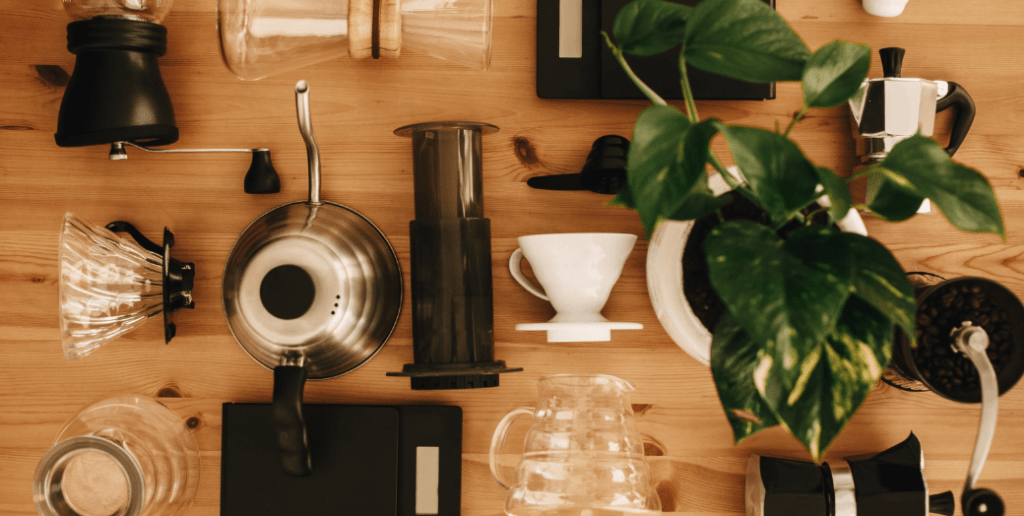As a coffee enthusiast and home barista, I have had the opportunity to experiment with many different coffee brewing methods, each of which is unique and has its strengths and weaknesses. With this in mind, if you are considering a new way to experiment, want all the information before buying something new, or want to find the coffee brewing method that works best for you, the list below can help your journey.
The four main coffee brewing methods include:
- Steeping Methods: Such as the Aeropress, and French press
- Drip Methods: Such as the Chemex and other Drip Coffee Makers
- Pressure Methods: Such as Espresso Machines and Moka Pots
- Other Methods: Such as Nitrous Coffee and Turkish Coffee
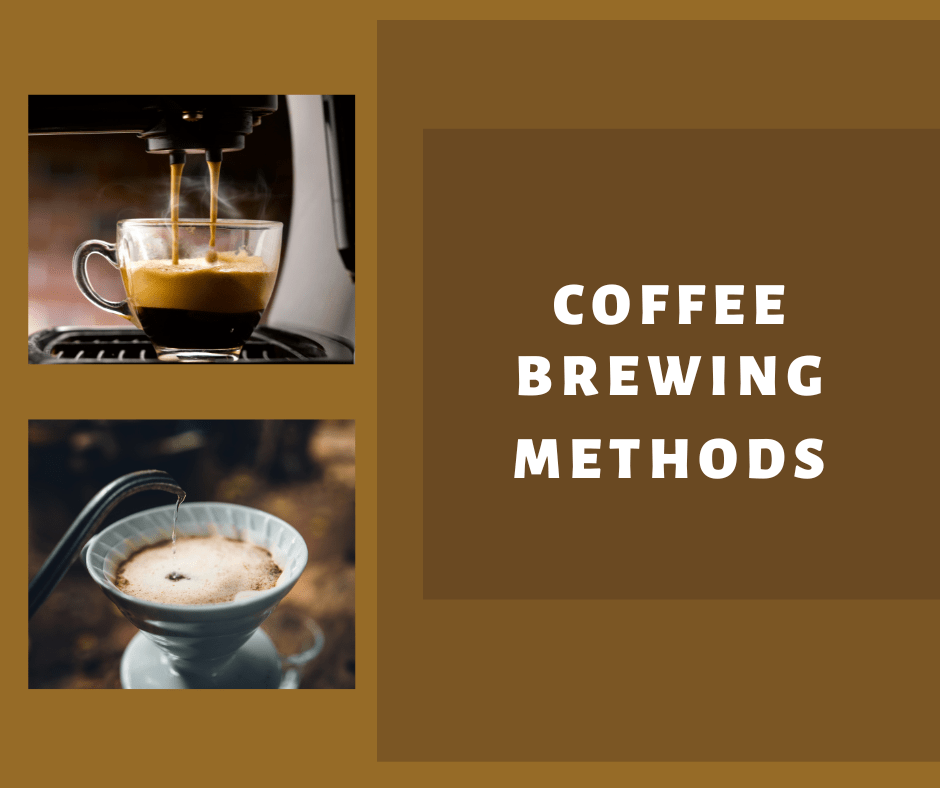
1. Steeping Methods
Making coffee using a steeping coffee brewing method can be one of the simplest ways to make great-tasting coffee. Steeping brewing methods are similar to how you make tea; you allow the coffee to soak in some water. While the ground coffee soaks in the water, the water absorbs the flavor of the coffee.
Five main coffee brewing methods fall under the steeping category, and below, we discuss each of these methods with their pros and cons.
Aeropress
Though you may expect the Aeropress coffee brewing method to be under the “pressure” category, it is essential to remember that the Aeropress first requires you to soak your coffee in water before you can use pressure to extract all the flavor. Only after the coffee has been allowed to soak for a little bit can you apply pressure, which is also more related to the original idea of making coffee with crema.
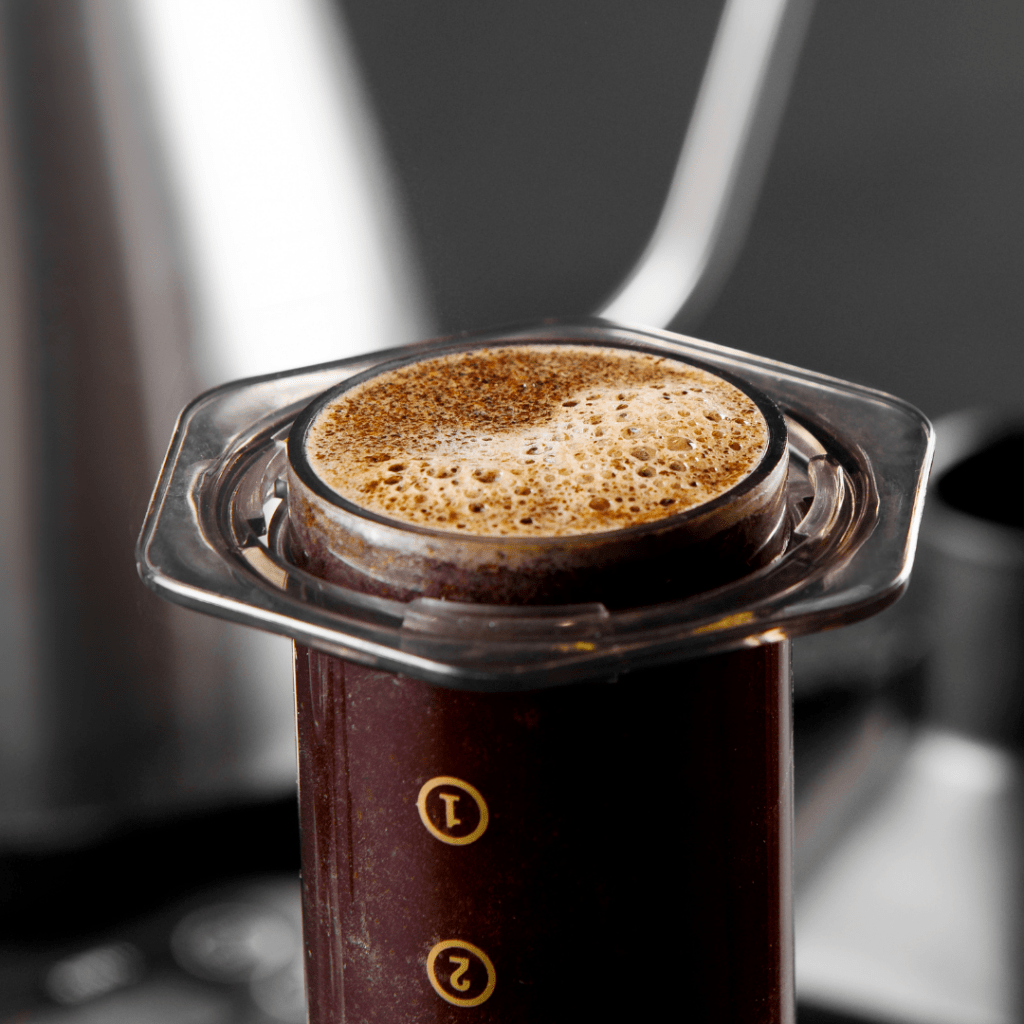
Pros:
- The Aeropress is light, relatively small, and requires little else, making it perfect for traveling
- It also has a shorted brew time than a French press due to lower steeping times
Cons:
- If you’re expecting a perfect espresso, this may not cut it
Cold Brew
Despite gaining most of its reputation in the last few years, cold brew coffee was around for a long time before it became the art it is today. The traditional and easiest way to use the cold brew coffee brewing method is to soak ground coffee in a jar or room temperature water for around 12 hours or more. Though it has drawbacks, this slower brewing method often creates a unique coffee experience.
Pros:
- Using this method of brewing is likely to result in a sweeter-tasting coffee
- Since the coffee is made cold, it is easy to travel with since there’s no need to warm it
Cons:
- Brewing coffee in this way takes a lot longer than most other coffee brewing methods
- Though the coffee is sweeter, it loses much of its aroma
French Press
The French press coffee brewing method is one of the most well-known and loved coffee brewing methods, especially for those at home who do not have an espresso machine. This steeping method requires you to mix coffee and hot water in a French press container, allowing it to soak for a bit, and then use the French press filter to separate the coffee water and the grounds before pouring.
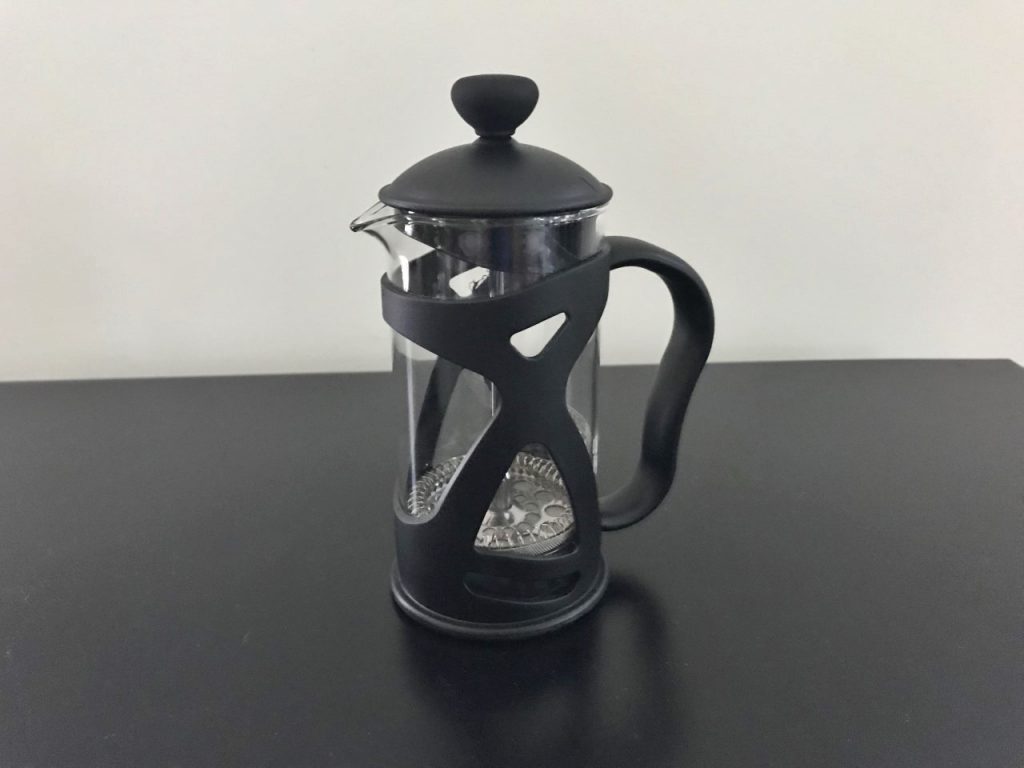
Pros:
- The French press brewing method is straightforward to use
- You don’t need any extra fancy equipment
Cons:
- The process isn’t fast since the coffee needs to steep for long enough
- You will likely get some grounds in your last sip of coffee
Instant Coffee
Though there are different ways companies make instant coffee, we are more interested in making it at home by adding water or milk. Though instant coffee powder dissolves in the water or milk we add, it is technically still considered a steeping method. As stated before, and given in the name, all you need to make instant coffee is to add liquid, which is why it is called instant.

Pros:
- Instant coffee is often cheaper than coffee beans
- Instant coffee is incredibly convenient
Cons:
- Instant coffee is often cheaper because of the use of bulk-bought cheap coffee beans
- There is a decent chance that instant coffee is a mix of coffee and chicory
Vacuum/Siphon Brewers
Though it’s been trendy before, the siphon and vacuum brewing method has recently gained attention because of the clean flavors and unique brewing experience. During this brewing process, water gets heated to the boiling point, which transfers through a tube into a siphon container. Then coffee is added and mixed before the collection pot is cooled, and the liquid coffee feeds through the tube.
Pros:
- The siphon method extracts wonderful coffee flavors
- The brewing experience is unlike anything else and feels very scientific
Cons:
- The equipment you need may be somewhat on the pricey side
- The equipment, since its usually made of glass, can break quite easily
2. Drip Methods
Making coffee using a drip coffee brewing method is one of the most popular and usually easiest ways to make coffee if you have some spare time. If you want to make the best-tasting cup of coffee using this method, it is also likely that you may need a scale and a timer. This method involves pouring water over coffee grounds in a filter and allowing the liquid to drip into a receptacle before drinking.
Below are the four main drip coffee brewing methods, with their pros and cons.
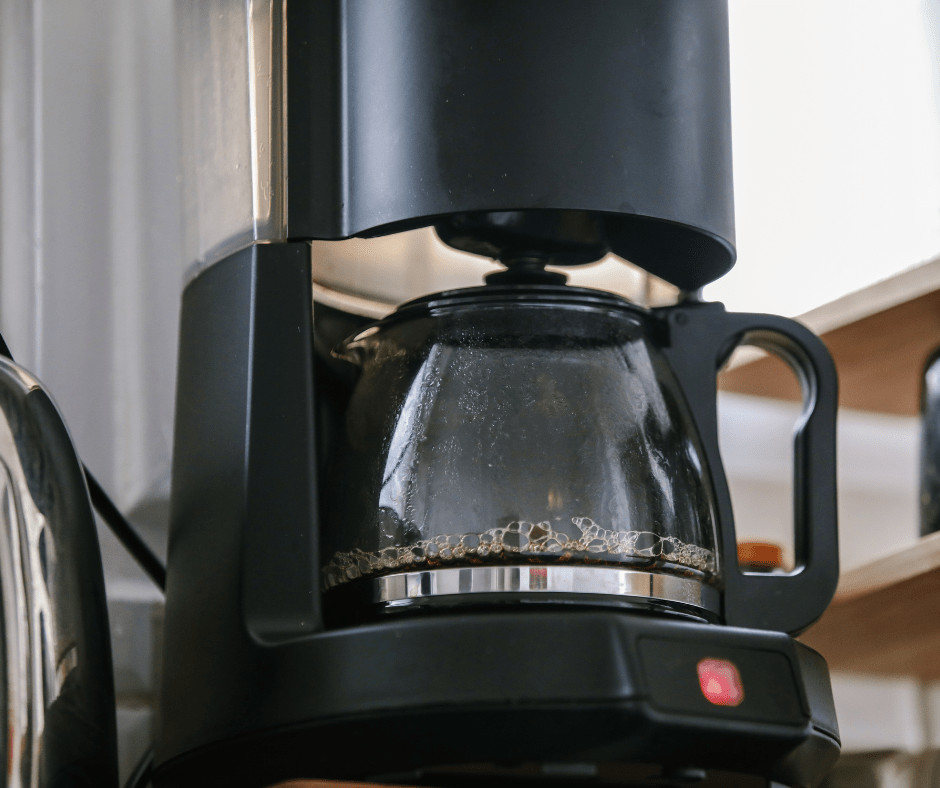
Chemex
The Chemex recently gained a lot of traction due to its use in “third-wave” specialty coffee shops and is undoubtedly one of the most beautiful-looking drip techniques. This brewer works by adding a filter to the top funnel part of the brewing pot, adding coffee grinds into the filter, and then pouring water over the coffee grinds in a specific way to extract as much flavor from the coffee as possible.
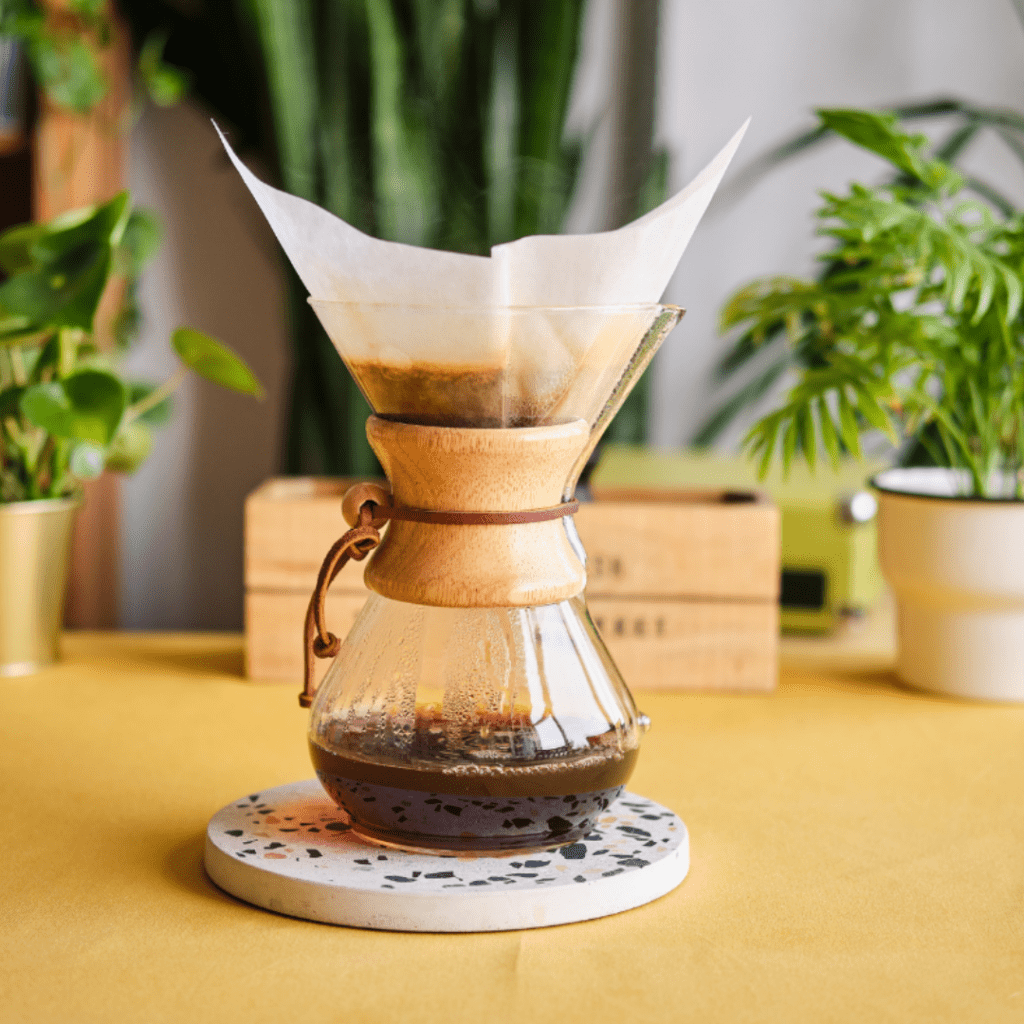
Pros:
- The taste of Chemex coffee is immaculate compared to some other brewing methods
- This extraction method enhances any fruity or unusual notes in your coffee
Cons:
- The equipment you need can easily break since it gets made of glass
- Cleaning the Chemex can be difficult due to its shape
Drip Coffee Makers
Drip coffee makers, or filter machines, are one of the most popular methods for making coffee at home since the process requires little from you, and the machine does most of the work. This coffee machine is the type you are likely to see in a kitchen with a carafe under it, and it works by adding water, which heats up and works through the ground coffee and filter, dripping into a receptacle.
Pros:
- This coffee brewing method is straightforward to use
- This method is great for making coffee for more than one person
Cons:
- Cleaning a drip filter machine can take a lot of time and effort
- The coffee doesn’t always taste the same, and there is rarely something you can do to enhance it
Percolators
The experience of most people is that percolators make strong coffee and are easy to use at home. This brewing method works almost like a reverse version of the siphon coffee makers mentioned above, instead pushing water from the bottom of the water reservoir over the coffee grounds and allowing it to trickle through the ground coffee back into the water reservoir.
Because this process can repeat, percolators can make coffee that extracts a lot more flavor, and the result is a coffee that most consider quite “strong.”
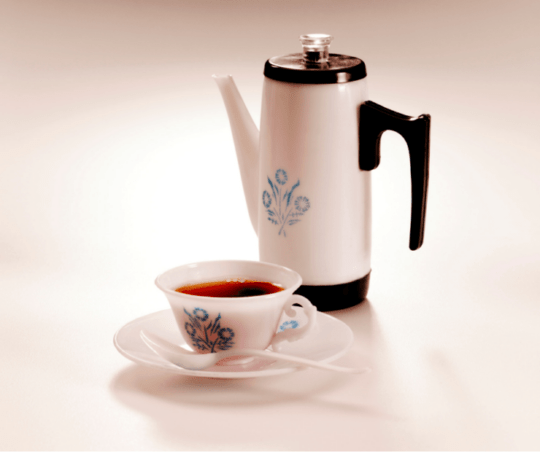
Pros:
- Percolators are relatively straightforward to use
- Many people enjoy the more robust taste a percolator produces
Cons:
- Depending on the manufacturing material of the percolator, it may still break easily
- There is somewhat of a learning curve that comes with using a percolator to make coffee
Pour-Over Coffee
Much like the Chemex, Pour-over coffee has grown in popularity due to its use in many “third-wave” specialty coffee shops. Pour-over drippers such as the Hario v60 can make excellent and clear coffee either in a shop or at home. The process usually involves a timer and scale and requires you to pour water over a funnel with a filter and coffee to extract a unique coffee taste.
Pros:
- Pour-over coffee can enhance any fruity or unique notes in the coffee flavor
- It is easy to clean the equipment since the funnel is detachable
Cons:
- Learning how to make a decent cup of pour-over coffee can take some time
- Since the technique is complicated, it can also take more time
3. Pressure Methods
Coffee brewing methods that use pressure to extract flavor from coffee grounds or other coffee solids are likely to be the most flavorful and robust of the extraction methods. Usually, these methods direct water in such a way that it uses a build-up of pressure, usually from steam, and pushes water through finely-ground coffee to extract as much flavor as possible.
Below are the most well-known and popular coffee brewing methods that require pressure and their pros and cons.
Espresso Machine
Espresso is one of the most well-known and popular extraction methods for coffee, probably because most coffee shops and restaurants use it to make their coffee drinks. Though the process is complicated, we can summarize it as finely ground coffee getting pressed into a filter with a spout and highly pressurized water being forced through the ground coffee to extract its flavor.
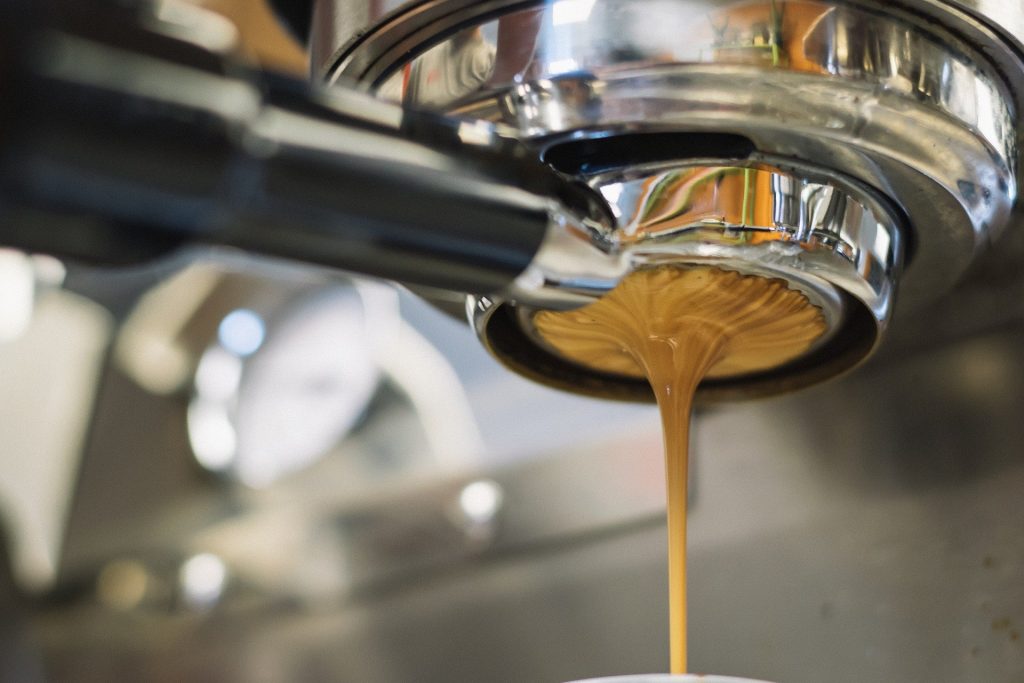
Pros:
- This extraction method allows you to change settings to extract the best flavor from different beans
- The addition of crema to your darker coffee liquid makes this coffee great for specialty shops with latte art
Cons:
- Learning how to make genuinely exceptional espresso takes time
- Even a little mistake can make your coffee taste terrible
Moka Pot
Many people use Moka pots as an easy-to-use, travel-safe alternative to an espresso machine. This little pot can be used on an open fire or a stove and heats water to create pressure and extract espresso-like coffee.
This method heats water in the bottom compartment to create pressure and then pushes the heated water through a funnel and filter to extract coffee from ground beans while storing the liquid coffee in the top compartment.
Pros:
- Using a Moka pot is a great way to make pressure coffee, even when you are traveling
- Moka pots are considerably cheaper than an espresso machine
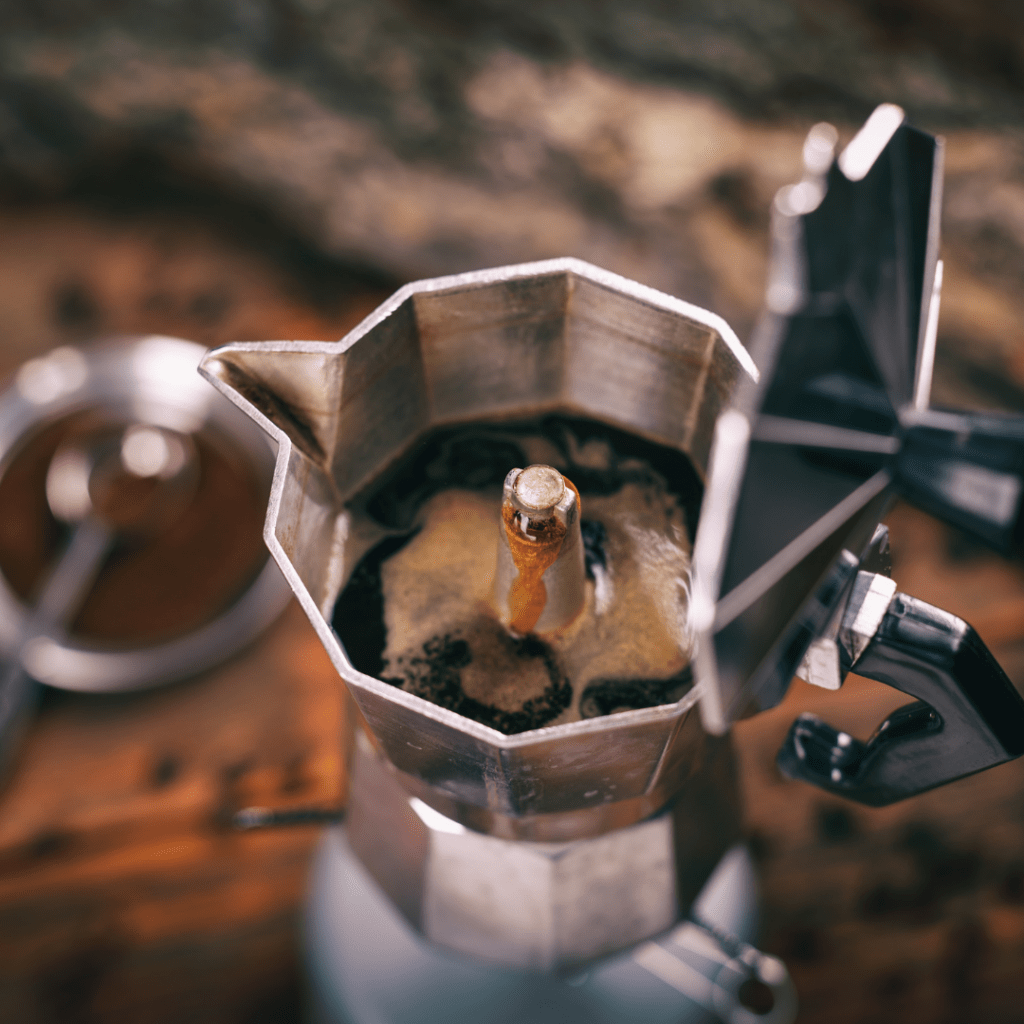
Cons:
- It takes some time to learn how not to burn the water using this method
- It is easy to make a mess when some grinds prevent the Moka pot from sealing correctly
Single-Serve Pod Machine
Single-serve pod machines have grown in popularity since they make espresso at home without the need to know any advanced skills. These machines use water that is pressurized and pushed through a small needle-like spout to extract the coffee flavor from a “pod,” which contains preground coffee sealed away to keep it fresh.
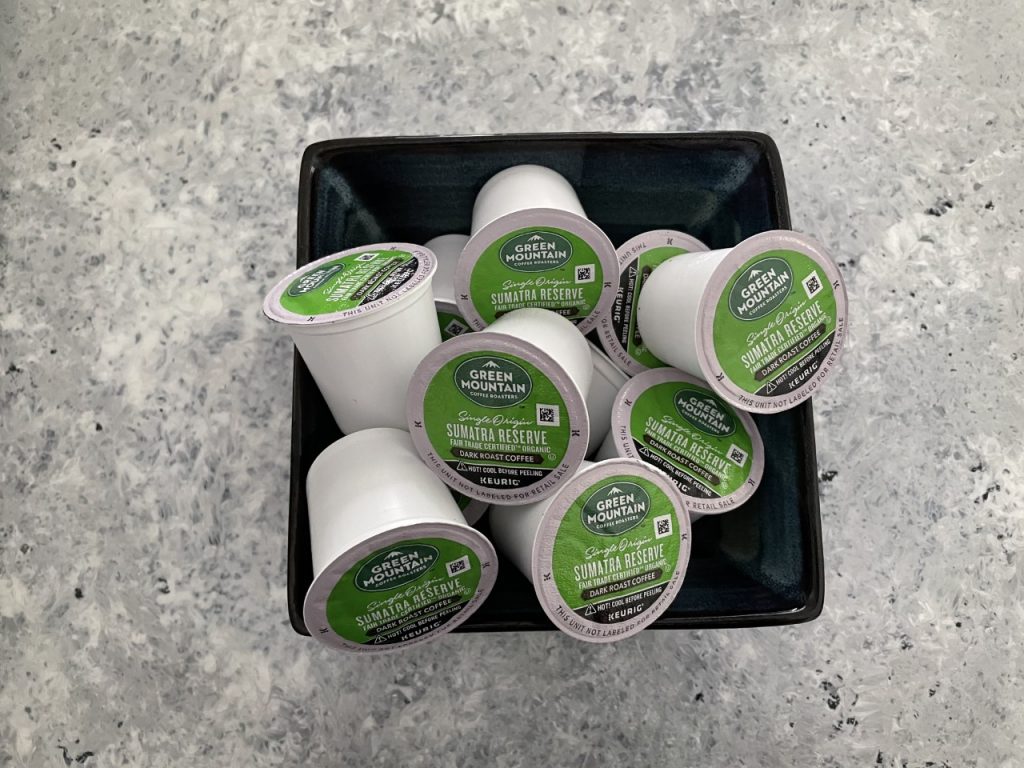
Pros:
- Pod machines are easy to use and generally only require a new pod and a button press
- The flavor from these machines is close to that of a complete espresso machine
Cons:
- Single-serve pods can cause a lot of additional waste since the pods get discarded after their one use
- Unless you use specific machines, you can’t use your coffee beans
4. Two Lesser-Known Coffee Brewing Methods
Though all of the methods above are at least relatively well-known, there are other methods you can use to make coffee that may be interesting to discuss. Below are two lesser-known coffee brewing methods with pros and cons.
Nitrous Coffee
Nitrous coffee, also known as nitro cold brew, is a variation of cold brew that is not only cold coffee but gets infused with nitrogen to give it a similar look and feel to beer or carbonated drinks. There are different ways to make nitro coffee, but it is usually stored in a keg, bottle, or can, to keep the pressure.
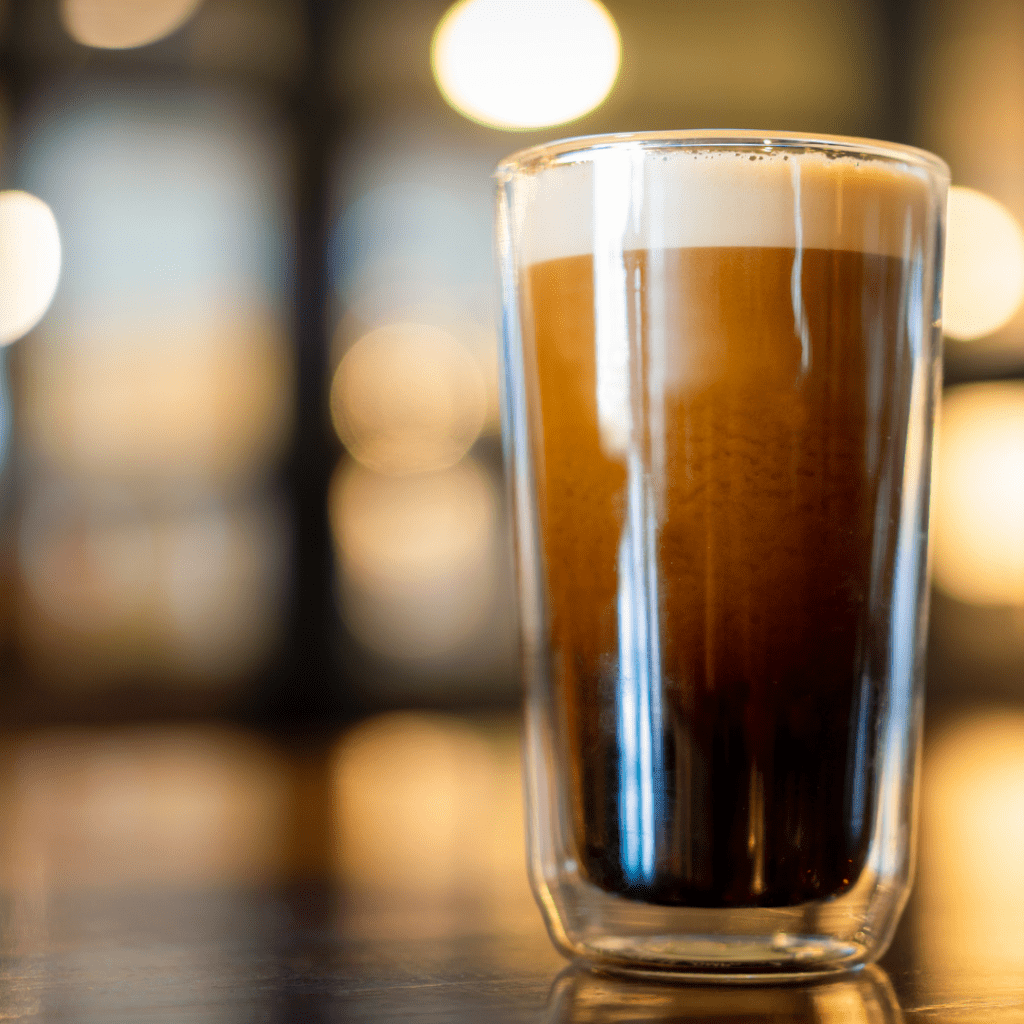
Pros:
- The nitro cold brew still has a sweeter taste than most hot extraction methods
- Drinking nitro coffee is unlike anything you would expect from a coffee experience
Cons:
- Nitro-coffee extraction requires specialized equipment
Turkish/Cowboy Coffee
There are different ways to make Turkish or Cowboy coffee, some of which are more spectacular to watch than others. However, the basic principle stays the same: mix cold water and fine powder coffee in a brewing container and heat it until it becomes frothy and the ground coffee falls to the bottom. Then you pour the frothy coffee into a cup and allow it to rest before drinking it.
Pros:
- Turkish coffee provides a different coffee experience than most other extraction methods
Cons:
- It takes a while to understand how to make this type of coffee correctly
- It is hard to find reliable sources that allow you to learn how to make this coffee in a way that doesn’t result in it being an unpleasant taste
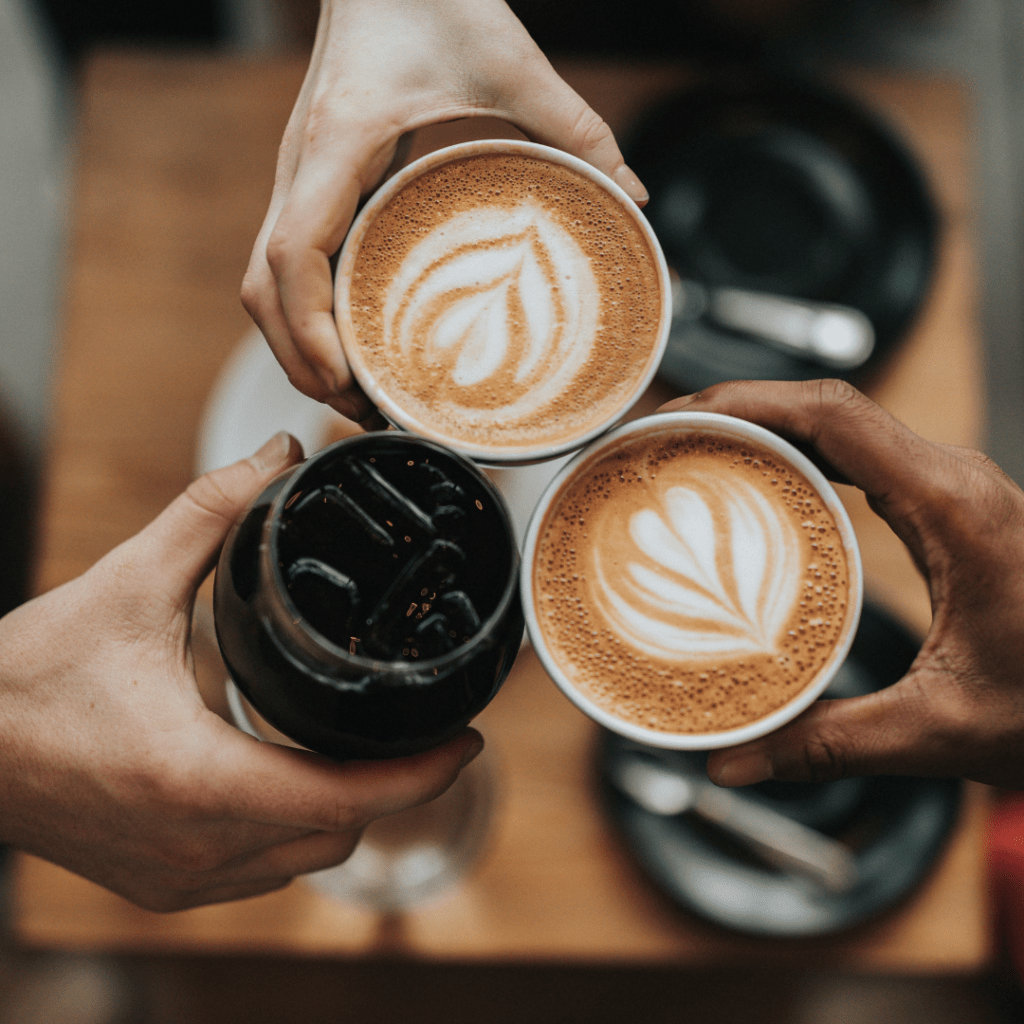
Frequently Asked Questions
After discussing so many brewing methods, it is natural to have some questions that need answering; below are some of the most frequent ones.
What Is The Best Method For Brewing Coffee?
Ultimately the best coffee brewing method will change depending on your need. Suppose you’re looking for highly customizable and excellent flavor. In that case, the espresso machine will always come out on top, but if you want your brewing method to extract the coffee to highlight the more niche notes of your beans, you may prefer something like the Chemex or a pour-over.
What Is The Easiest Coffee Brewing Method?
The three methods that stand out as the easiest brewing methods are the French press, the drip filter machine, and the single-serve pod machine since these allow you to do as little work as possible. However, this may also vary based on your needs and the type of coffee you enjoy drinking.
Which Coffee Brewing Methods Take The Longest Time?
The coffee brewing method that takes the most time is, without a doubt, the cold brew method and its nitro coffee variant. These coffee brewing methods require the liquid to extract the flavour of the coffee slowly over at least twelve hours, but it can take even longer.
Final Thoughts: Coffee Brewing Methods
There are plenty of ways you can make coffee, some of the methods mentioned above may take longer or require more specialized equipment than others, but all methods have their strengths and weaknesses. The coffee brewing method that works best for you can also change over time, and it isn’t unheard of to use more than one method regularly.
